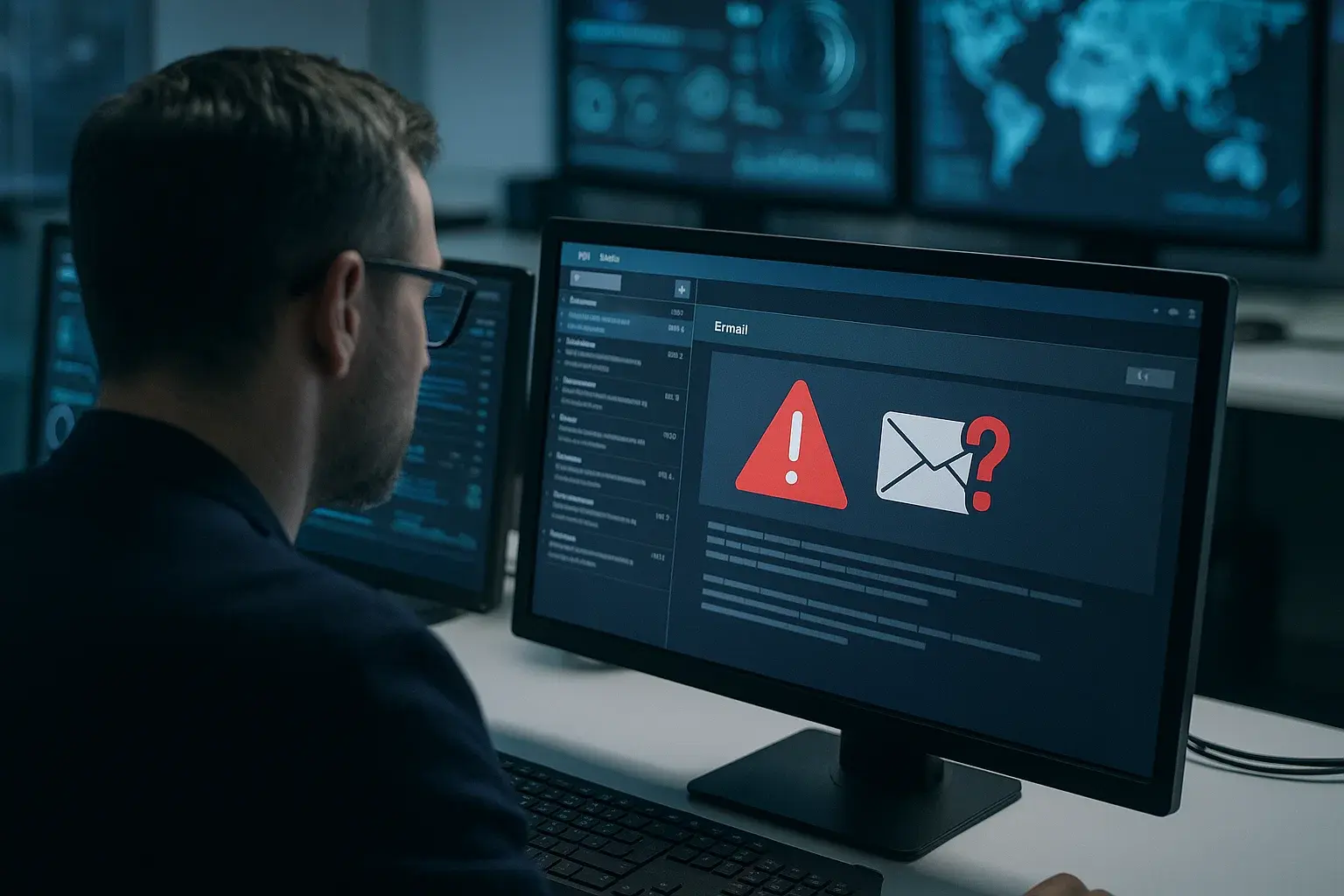If you work in cybersecurity, you’ve likely noticed something: what once seemed “normal” in email is no longer safe. Attackers are using AI, automation, and new evasion techniques at scale—forcing CISOs and their teams to completely rethink their strategies.
The 2026 Cybersecurity Report from Hornetsecurity, based on over 70 billion analyzed emails, confirms what we see daily at TecnetOne: email remains the weakest link. But now, it’s also a more sophisticated and dangerous attack channel.
Here’s how threats are evolving—and what you need to reinforce to protect your business continuity.
Email Remains the Weakest Link
Despite the emergence of more complex attack vectors, email continues to be attackers’ favorite weapon. And it’s no coincidence—it remains the easiest way to:
- Trick users
- Evade security filters
- Launch full attack chains
According to the report:
- Email malware rose by over 130%
- Scams increased by over 30%
- Phishing incidents grew by more than 20%
This isn’t just about isolated incidents—it’s causing account takeovers, operational disruptions, and major reputational damage.
“Harmless” File Types Are Back as Weapons
A concerning finding is the return of file types many SOCs no longer considered threats:
- Malicious TXT files surged by 180%
- Traditional DOC files rose by 118%
- ZIP remains heavily used
- HTML and RAR formats dropped—likely due to closer scrutiny
Attackers know defenders have relaxed vigilance over these “basic” formats—so they’re now using them to hide payloads, malicious links, or scripts.
Advanced Evasion Techniques on the Rise
Cybercriminals now manipulate:
- Fake headers
- Hidden domains
- Shortened URLs
- Camouflaged HTML
Their goal? Not just fool the user—but bypass your filters, triggering multi-stage intrusions while staying under the radar for as long as possible.
Similar titles: SpamGPT: The New AI-Powered Phishing Threat
Ransomware Is Growing Again—Faster Than Before
After a brief decline, ransomware is making a strong comeback:
- 24% of organizations reported attacks, up from 18% the year before
- Only 13% paid ransom, but overall attack volume skyrocketed
And email is no longer the only entry point. Attackers are combining:
- AI-powered phishing
- Credential theft
- Endpoint vulnerabilities
- Third-party and supply chain access
Over a quarter of infections now come through endpoints, and more organizations are reporting credential theft as the initial vector.
Some Good News: More Firms Use Immutable Backups
- 62% now use immutable backups
- Over 80% have disaster recovery plans
But the threat isn’t shrinking. Criminal groups now use AI to speed up reconnaissance, automate privilege escalation, and launch more coordinated campaigns.
AI Is a Double-Edged Sword
AI is helping both attackers and defenders. But attackers are moving faster.
Most CISOs agree: AI is increasing the risk of ransomware and scams. That’s why two-thirds of companies are now investing in AI-driven detection and analysis.
However, there’s a problem: governance isn’t keeping up.
- Users are using public AI tools without understanding the risks
- Leadership doesn’t fully grasp the impact
- Training remains inconsistent
AI-Powered Threats Are Already Here
Emerging threats include:
- Deepfakes for identity impersonation
- Model poisoning
- Synthetic identities
- AI-driven credential theft
These tactics expand the attack surface and make sensitive data harder to protect.
Learn more: What to Do If You Receive a Suspicious Email: Guide for Employees
Identity: The Achilles’ Heel of 2026
AiTM kits (Adversary-in-the-Middle) can already bypass many MFA methods by stealing session tokens in real time. These kits can:
- Handle MFA live
- Forward credentials to the legitimate portal
- Capture tokens before users notice
Phishing-Resistant MFA Works—But Adoption Is Low
Effective methods include:
- Hardware security keys
- Certificate-based authentication
- Windows Hello for Business
- Passkeys
But adoption is still limited, and user experience across platforms remains fragmented.
Account Recovery Remains a Critical Weakness
Recent attacks have succeeded because:
- Support staff were easily tricked
- Privileged accounts were reset without strict verification
- Administrative processes lack strong controls
Identity remains one of the most vulnerable areas in most organizations.
SaaS and Browsers: Emerging Critical Attack Surfaces
SaaS platforms are now direct targets for:
- Accessing sensitive data
- Disrupting internal workflows
- Exploiting third-party integrations
OAuth token theft is especially dangerous. In many cases, revoking access is the only way to stop abuse.
At the same time, malicious browser extensions are being used to bypass controls and steal confidential data.
Conclusion: Email Is Still the Most Exploited—and Overlooked—Vector
Despite all available security tools, email remains where organizations let their guard down—making it the perfect blind spot for attackers.
The report findings make it clear:
- Threat volume will keep growing in 2026
- AI boosts both attacks and defense—but attackers move faster
- Identity and email remain top exploited vectors
- SaaS, browsers, and third parties expand overall risk
At TecnetOne, we always say: if you don’t strengthen the basics—email, identity, phishing-resistant MFA, SaaS control, internal processes—your advanced investments will fall short.
Email isn’t outdated.
It’s more alive, more dangerous, and more evasive than ever.


